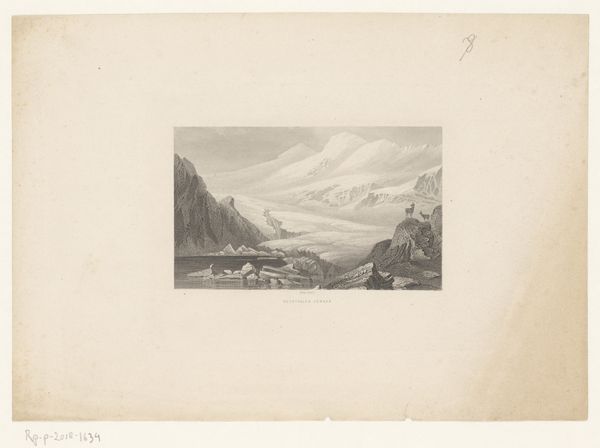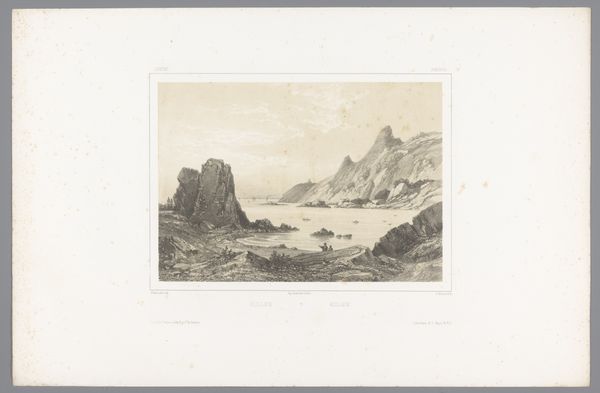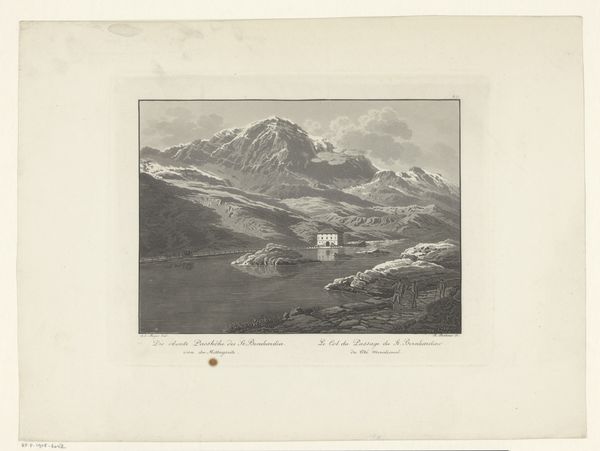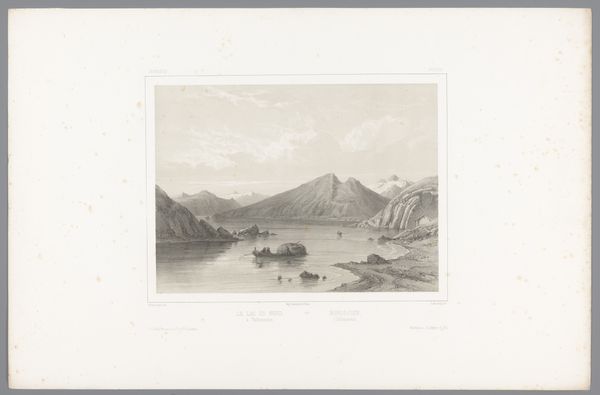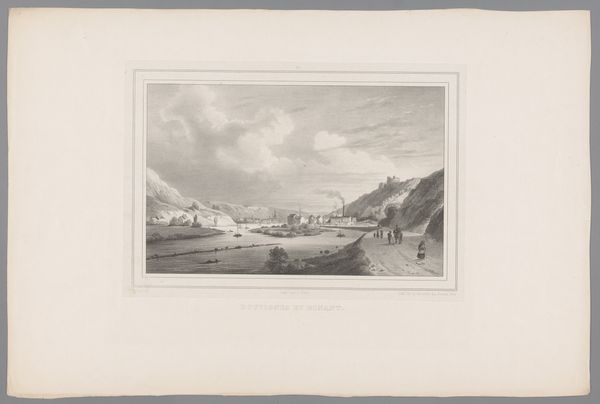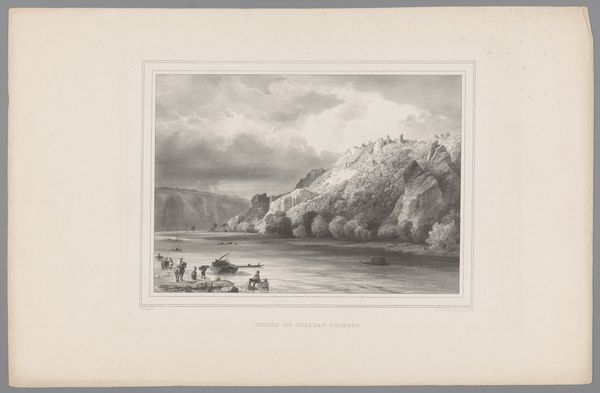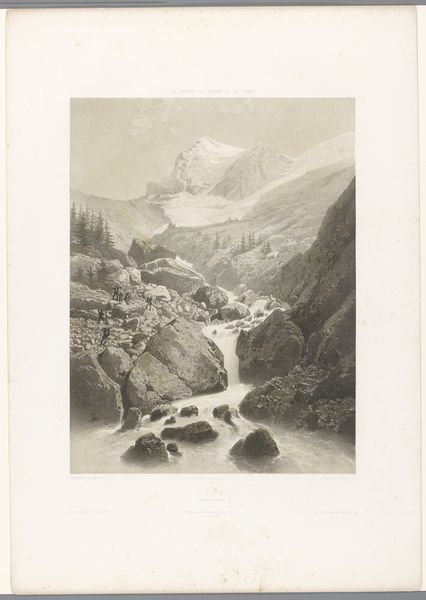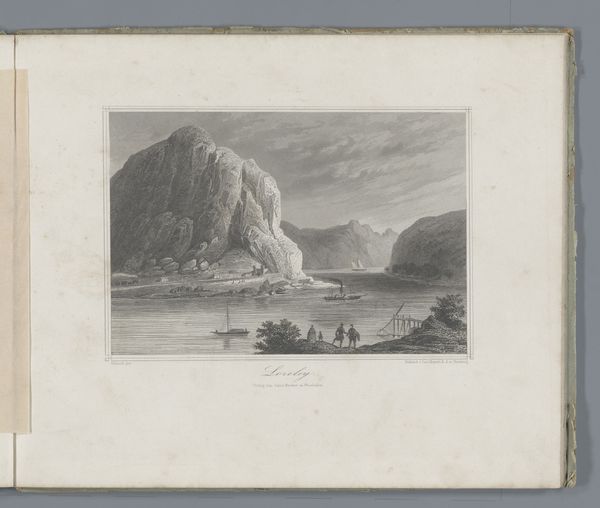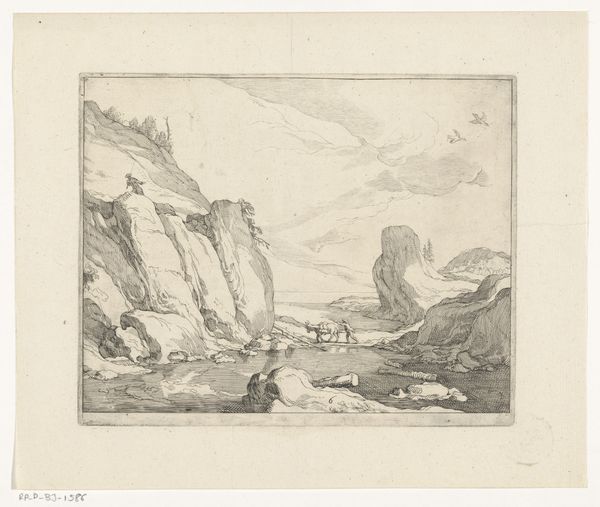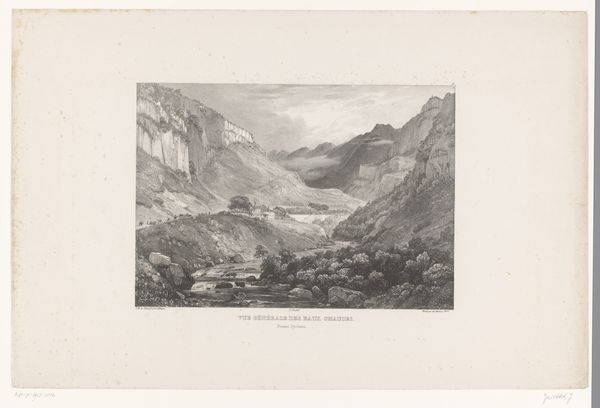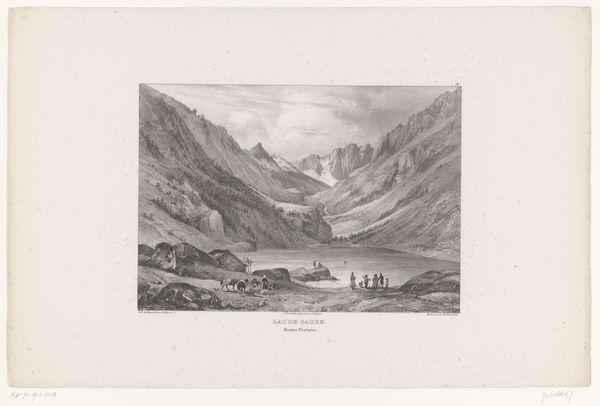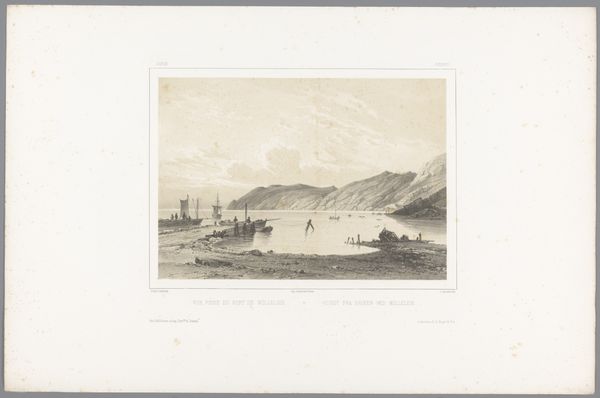
Dimensions: height 360 mm, width 549 mm
Copyright: Rijks Museum: Open Domain
Editor: Here we have Louis-Julien Jacottet’s “Zalmvissers bij de Kassa rivier in Halland,” created in 1851. It’s an etching, and I’m struck by how small the figures are in contrast to the dramatic landscape. What draws your eye when you look at this piece? Curator: I immediately consider the context of land ownership and resource exploitation in 19th-century landscape art. Who had access to these salmon rivers, and who was excluded? Romanticism often idealizes nature, but it can also mask the socio-political realities of its time. Who exactly are those figures and what claim do they have on that land and its resources? Editor: So, it’s not just a pretty picture, but a statement about who controls nature? Curator: Precisely. The seemingly objective depiction of this Swedish landscape is in fact loaded with power dynamics. Notice how the churning water and rugged rocks emphasize nature’s power, yet it is being tamed, or at least attempted to be, by the fishermen. It's about the struggle between humanity and nature, but also the quiet erasure of existing populations to serve colonial interests. How do you think this artwork might be received differently today? Editor: Knowing that, I see it with new eyes. It's more unsettling. Curator: Indeed. By interrogating these romanticized depictions, we can expose the complex layers of history and challenge the dominant narratives embedded within them. I hope this approach allowed us to expose the silent undercurrents in Jacottet’s landscape. Editor: Absolutely. I will definitely look at landscape art differently now. Thanks for the insight!
Comments
No comments
Be the first to comment and join the conversation on the ultimate creative platform.
